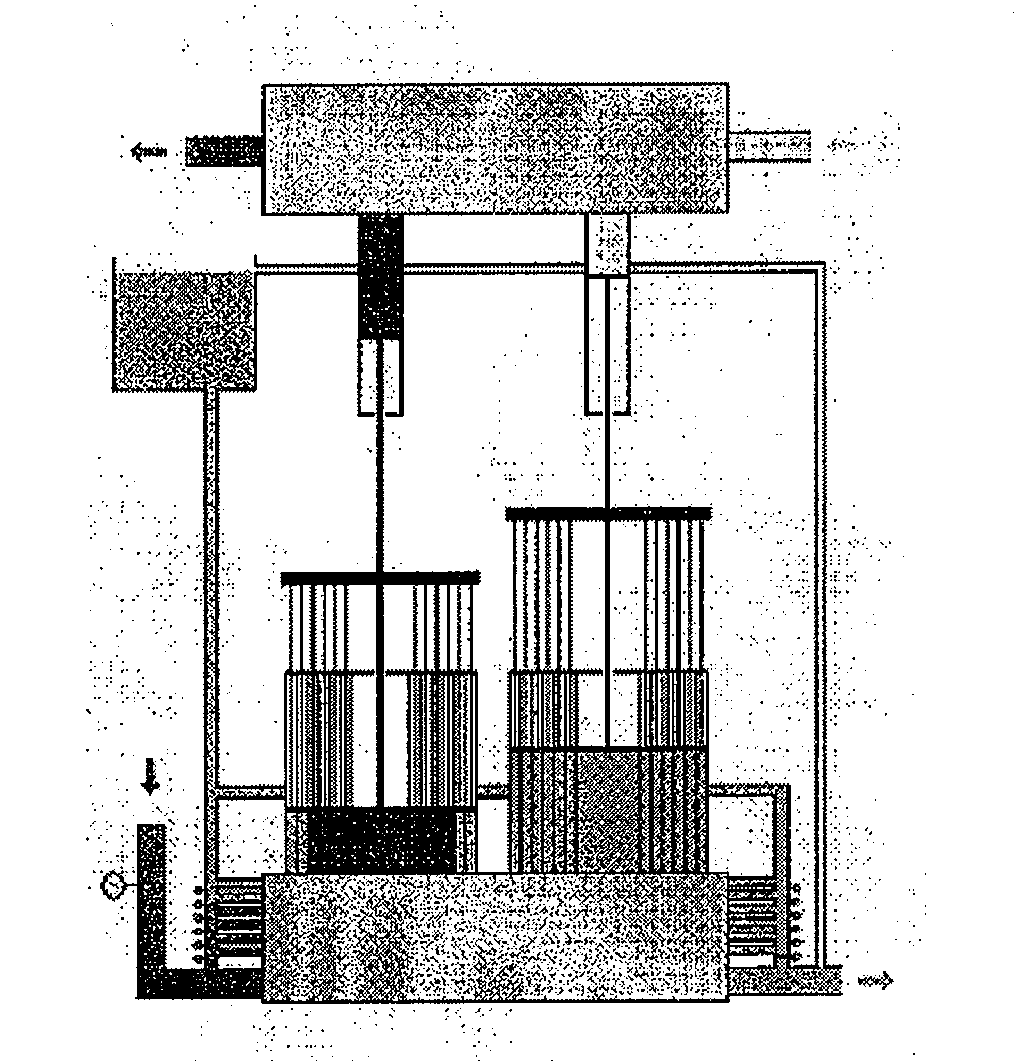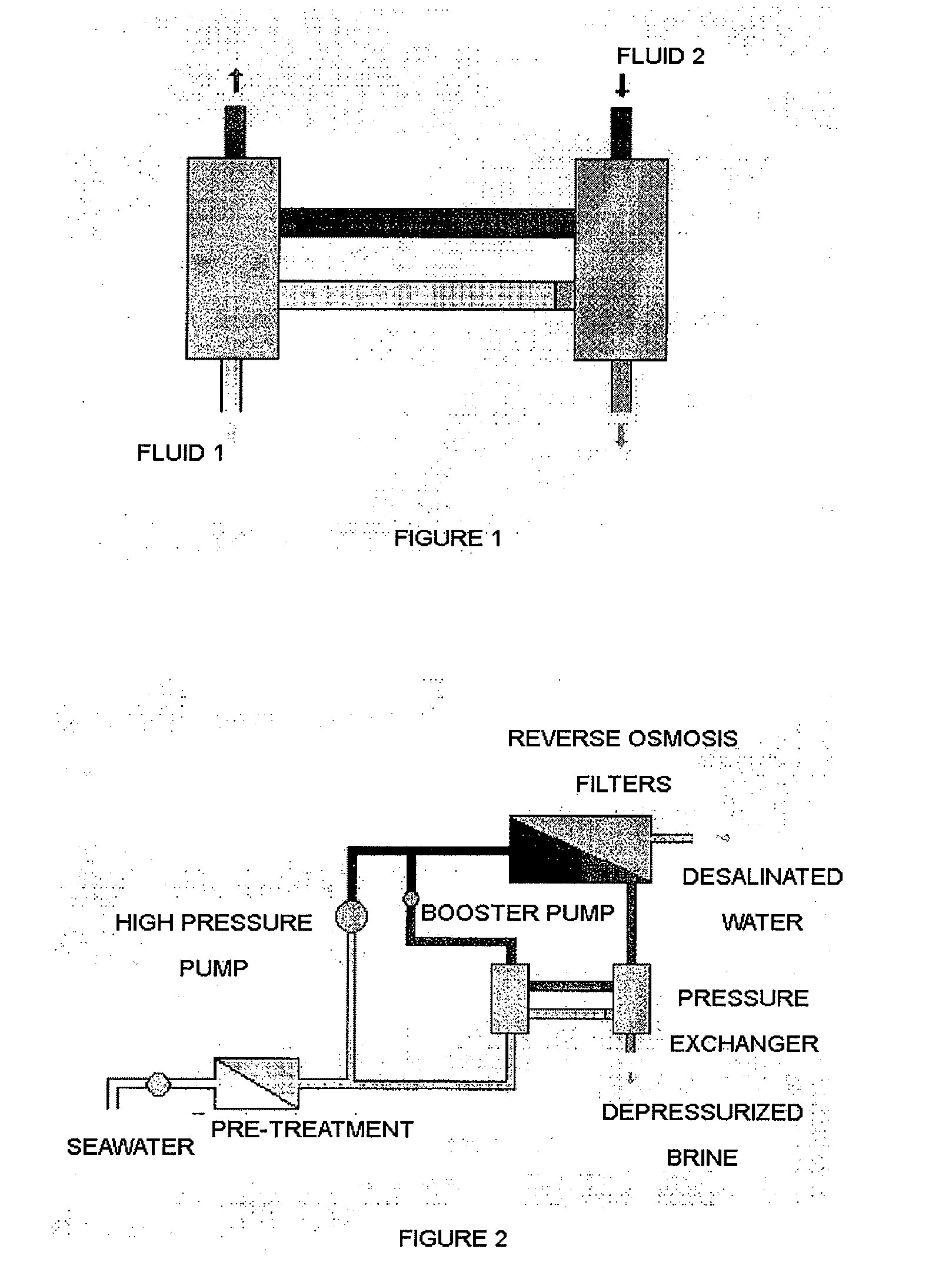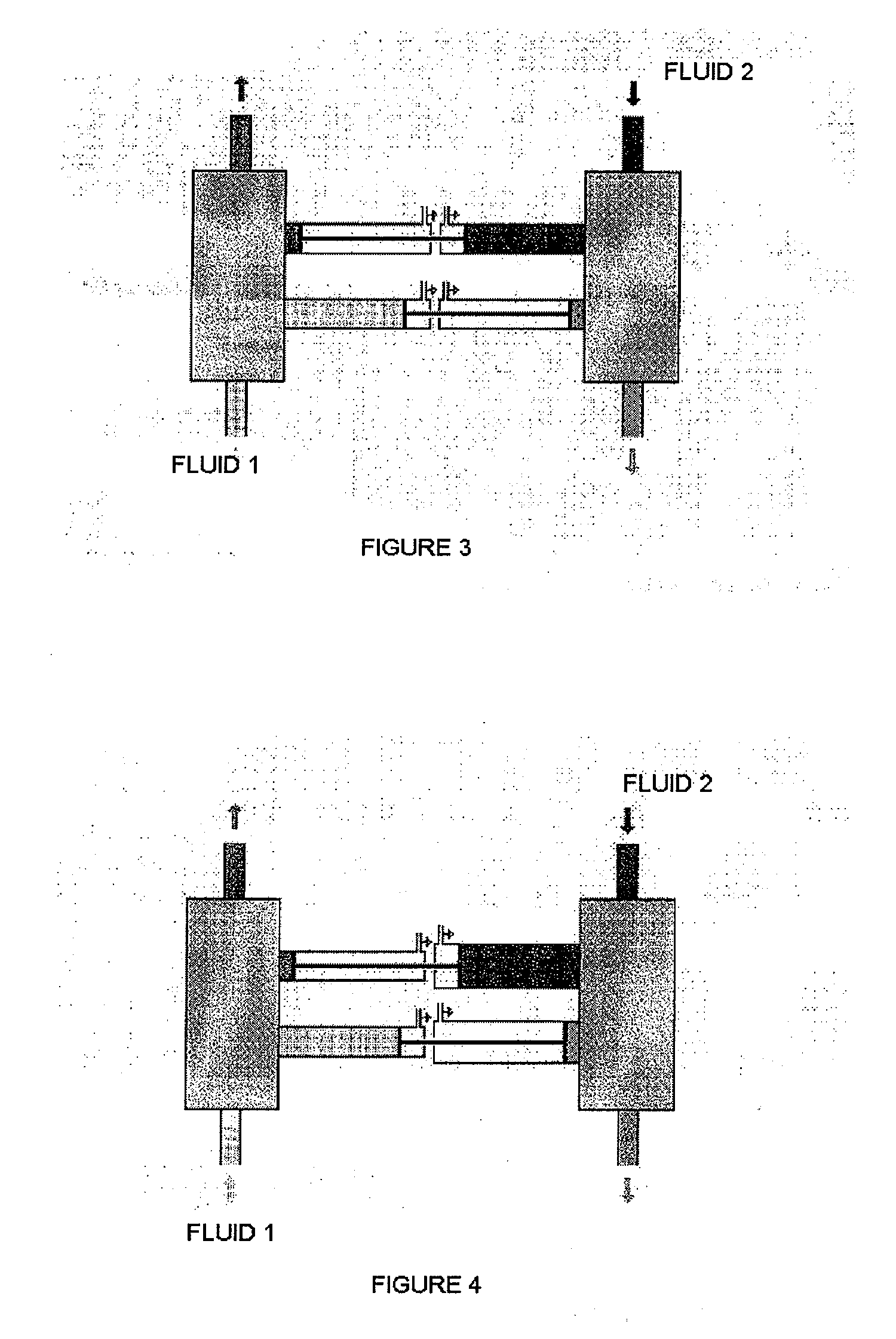Split-chamber pressure exchangers
a technology of pressure exchanger and split chamber, which is applied in the direction of positive displacement liquid engine, piston pump, machine/engine, etc., can solve the problems of fluid pressure, fluid pressure, and traditional pressure exchangers generally present another, so as to reduce the performance of pressure exchanger and complicate the system control electronics
- Summary
- Abstract
- Description
- Claims
- Application Information
AI Technical Summary
Benefits of technology
Problems solved by technology
Method used
Image
Examples
Embodiment Construction
[0124]FIGS. 36 to 39 diagrammatically depict the operating process of a multistage SCPE, with seven concentric chambers located on the side of the pressurized feed fluid.
[0125]FIG. 36 shows the first of the lines starting to be filled and the second one starting to drain. The pressure gage at the inlet of the pressurized fluid records a high pressure of the fluid, therefore the valve feeding the concentric chambers closes and therefore only pressurized fluid enters the central cylinder. The valve system in the gray box in the figure allows the passage of pressurized fluid to the first line and prevents the passage thereof to the second line. Likewise, said system allows draining said already depressurized fluid from the second line. In addition, since the valve feeding the concentric chambers in the valve system shown in the figure in the second line is closed, it allows draining the fluid from the central cylinder but not from the remaining cylinders. The fluid contained in the rem...
PUM
 Login to View More
Login to View More Abstract
Description
Claims
Application Information
 Login to View More
Login to View More - R&D
- Intellectual Property
- Life Sciences
- Materials
- Tech Scout
- Unparalleled Data Quality
- Higher Quality Content
- 60% Fewer Hallucinations
Browse by: Latest US Patents, China's latest patents, Technical Efficacy Thesaurus, Application Domain, Technology Topic, Popular Technical Reports.
© 2025 PatSnap. All rights reserved.Legal|Privacy policy|Modern Slavery Act Transparency Statement|Sitemap|About US| Contact US: help@patsnap.com



